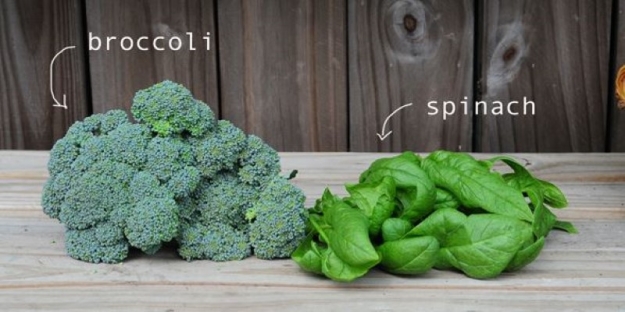Career & Education
Your 2025 Guide To The Hottest Jobs And Their Salaries
1757645873000
Struggling to get your kids to eat vegetables? These nutrient-packed foods are essential for healthy growth, stronger immunity, and energy.
Struggling to get your kids to eat vegetables? These nutrient-packed foods are essential for healthy growth, stronger immunity, and energy. With the right approach, kids can learn to enjoy vegetables—and even ask for them. Let’s explore some practical, parent-tested tips to make veggies part of everyday life.
Forcing kids to finish their vegetables usually backfires. They end up associating veggies with stress instead of enjoyment. Instead of demanding, try introducing them in playful ways.
Cut carrots, cucumbers, and bell peppers into fun shapes using cookie cutters. Serve them on colorful plates or arrange them into smiley faces. Younger children especially love food that looks like art. For older kids, you can create “taste challenges,” where they rank veggies from most to least liked. This sense of control often encourages them to try more.
Children are far more likely to eat vegetables when they’ve helped prepare them. Even simple tasks, like rinsing broccoli, tearing lettuce leaves, or stirring a pot, give kids ownership of the meal.
When kids help make a salad or stir-fry, they feel proud of their work and curious to taste it. You can even let them choose a “vegetable of the week” at the grocery store. Giving them small choices builds enthusiasm without pressure.
Sometimes it’s not the vegetable itself, but the way it’s served. Kids often find plain steamed broccoli or spinach unappealing. Pairing them with familiar flavors makes a big difference.

Melt a little cheese over cauliflower, toss roasted carrots with a drizzle of honey, or add peas to creamy pasta dishes. Even sauces like marinara, mild salsa, or hummus can transform how a child perceives vegetables. They start to see them as tasty, not boring.
Big servings of vegetables can overwhelm kids. A large pile of green beans might lead to an instant refusal. Instead, try offering a single bite-sized portion.
A spoonful of peas or a few roasted zucchini slices feels manageable and less intimidating. Over time, as kids get used to the flavors, you can gradually increase the portion. Success builds slowly, but it lasts.
It takes multiple exposures for kids to accept new foods. Research shows children may need to try a vegetable 10–15 times before liking it. This means parents shouldn’t give up after the first rejection.
Keep serving vegetables in different forms—raw, roasted, blended into soups, or added to sandwiches. Consistency teaches kids that vegetables aren’t optional side items; they’re a normal part of every meal.
One of the easiest strategies is blending vegetables into foods kids already enjoy. This doesn’t mean hiding them entirely, but combining flavors to achieve a balanced taste.
Grated zucchini or carrots can be baked into muffins. Spinach and kale blend smoothly into fruit smoothies without overpowering the flavor. Finely chopped mushrooms can be added to spaghetti sauce, and butternut squash works beautifully in mac and cheese.
These methods give children exposure to vegetables while making them easier to accept.
The way you present food matters as much as the food itself. Kids mirror adult behavior, so when they see you enjoying vegetables, they’re more likely to copy. Try eating meals together whenever possible, with everyone sharing the same vegetables.
Avoid bribing kids with dessert in exchange for eating their greens. That creates the idea that vegetables are a chore. Instead, celebrate small victories: “You tried broccoli today—that’s awesome!” Positive reinforcement makes the experience feel rewarding.
Not all vegetables taste good when boiled. Sometimes the cooking method is the problem, not the vegetable. Roasting, grilling, or sautéing brings out sweetness and a better texture.
Roasted carrots caramelize and become naturally sweet. Grilled corn takes on a smoky flavor that kids love. Even something like roasting Brussels sprouts with olive oil and a sprinkle of Parmesan can completely change their reputation at the table.
Kids often reach for snacks when hungry between meals. If vegetables are ready to grab, they’ll be eaten more often. Keep carrot sticks, cherry tomatoes, cucumber slices, or sugar snap peas washed and chilled in the fridge.

Pair them with dips like yogurt ranch, guacamole, or peanut butter for extra appeal. When kids are truly hungry, they’re more open to trying what’s available—so make vegetables the first option.
Children love stories, and connecting food with imagination can change their attitude. You can frame broccoli as “little trees,” peas as “green jewels,” or spinach as “superhero fuel.” By turning vegetables into characters or part of a playful theme, kids begin to engage with food in a fun way.
Family theme nights also work well. For example, a “rainbow dinner” where everyone chooses vegetables of different colors to create a colorful plate. These small rituals turn healthy eating into something exciting rather than routine.
The journey toward eating more vegetables takes time. Some kids warm up quickly, while others need months of gentle encouragement. Patience and persistence pay off in the long run.
If your child refuses a vegetable today, don’t label them “picky.” Instead, say, “Maybe you’ll like it another time.” Keeping the atmosphere calm and lighthearted removes pressure and makes the table a more relaxed place.
Teaching kids to enjoy vegetables isn’t only about today’s dinner. It shapes their future relationship with food. When vegetables become a regular, enjoyable part of meals, children grow up seeing them as natural choices, not something to avoid.
With patience, creativity, and consistency, kids can shift from resisting veggies to asking for them. Whether it’s through playful presentation, flavorful pairings, or involving them in the cooking process, every step brings them closer to a healthier diet.
And the best part? These small changes don’t just make vegetables part of your child’s plate—they can make them part of your family’s story.
Do you like this article?
Career & Education
1757645873000
Mother & baby
1757645852000
General Finance
1757645995000
Fashion
1757645952000
Career & Education
1757645873000
Mother & baby
1757645852000
Mother & baby
1757645852000
Fashion
1757645952000
General Finance
1757645995000
Career & Education
1757645874000









